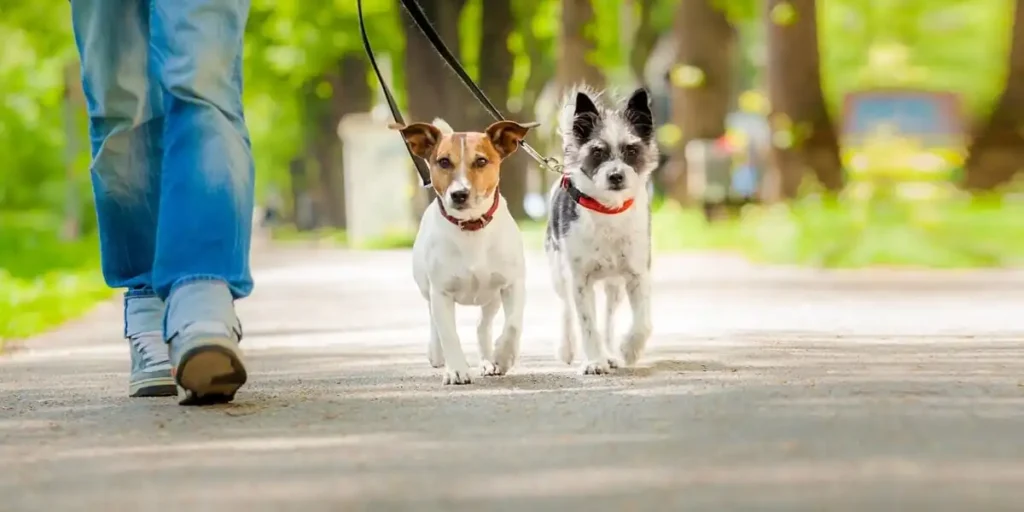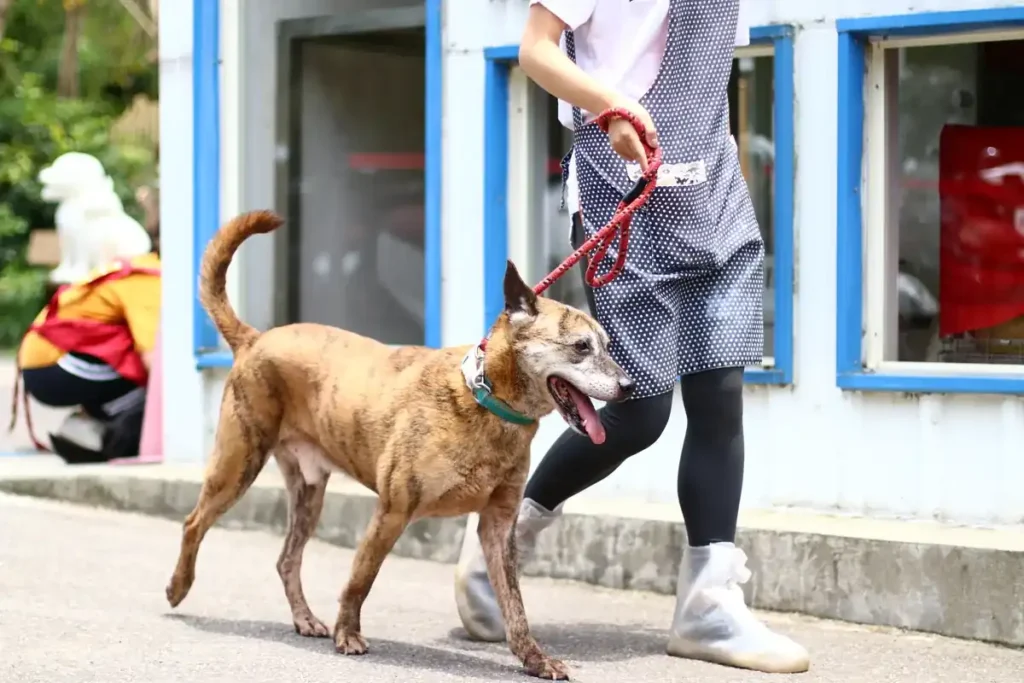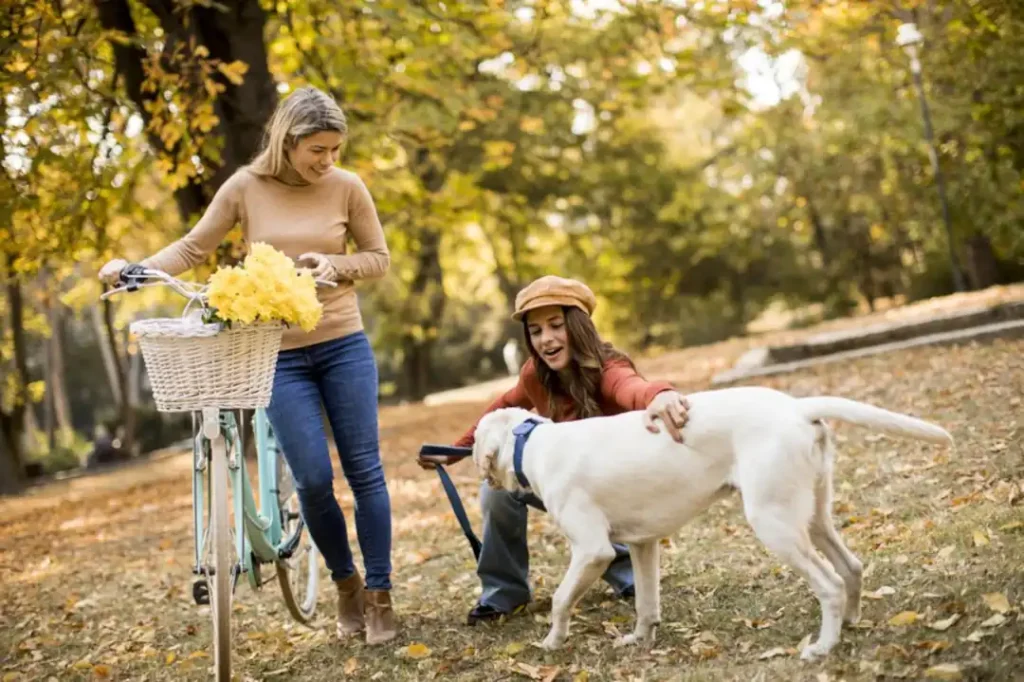Many people know that raising a dog requires taking the dog for a walk, but they do not understand that going for a walk is an indispensable thing in their life. It is also an important matter for maintaining the physical and mental health of the dog. Dog raising is not only about providing Food and living space are enough, and more importantly, we want our furry kids to live healthy and happy lives. So how do we properly arrange their furry kids’ walking activities? Now let us learn about dog walking together!
What is the importance of walking for dogs? As a pet owner, you must know this!

For dogs, walking can be said to be the most important and indispensable need after diet, and the physical, mental and mental health of dogs need to be maintained through walking. Let’s learn about the physical and psychological aspects of walking. The importance of it!
Physiological needs
🐕 Defecation needs: Dogs are very clean animals. They usually do not want to make their residence (home) dirty, but prefer to defecate outdoors. At the same time, dogs divide their territory by their own smell. This is the nature of dogs.
🐕 Maintain sufficient muscle mass: just like humans! Dogs that take regular walks can maintain body muscle mass, which is of great benefit to long-term health. If the amount of exercise is insufficient, it will be difficult to replenish the muscle once it is lost.
🐕 Energy consumption: Through the physical exertion of sniffing and walking, the dog can fully discharge his energy and maintain a stable state when he returns home, so that he will not tear down the house at every turn!
psychological needs
In fact, for dogs, sniffing during walks consumes the most energy. Dogs’ brains are different from humans. Smell is one of the most important senses of dogs. When dogs sniff, their brains will enter a serious operation mode, which will penetrate the dog’s brain. By smelling different odors, dogs can feel many flavors, which stimulates the operation of the brain and autonomic nervous system, giving dogs a lot of sensory stimulation. In addition, dogs can also understand the messages left by other dogs through sniffing and engage in indirect social interaction. These can consume a lot of the dog’s energy and at the same time stabilize the dog’s mood, which is very important for the dog’s mental health.
The Benefits of Walking Your Dog! An introduction to the 3 major benefits of taking your dog for a walk

Assist dogs with socialization
The process of socialization is the process of dogs understanding the operation and adaptation of society. Taking the dog out for a walk can help the dog understand the operation mode of the human world and learn what can and cannot be done outside. The owner should also guide the dog on how to get along with other dogs correctly and help the dog get to know other dog friends!
Preventing dementia in dogs
When a dog walks, it stimulates the brain and has the function of activating the brain. It is similar to reading training for humans. It can stimulate the brain and allow the brain to operate at full capacity. Using the brain will not only prevent the dog from becoming stupid, but also make the brain smarter and prevent the dog from losing weight in his later years. wisdom.
Deepen the emotional connection between dogs and owners
Spending regular time with dogs every day can deepen the relationship between each other. When owners exercise with their dogs, they can also promote physical and mental health. In addition to relieving stress, they can also exercise at the same time. It is simply killing two birds with one stone!
How to time your dog’s walks? Grasp the key points of body shape and make a simple assessment!
After understanding the importance and benefits of dog walking, you may want to ask: How much walking time does my dog need? Basically, the amount of activity a dog needs is directly proportional to its body size. The larger the dog, the greater the amount of activity it needs. The smaller the dog, the smaller the amount of activity it needs. The following is Let’s take a look at the time and frequency of walks that different dogs need!
| Dog breeds | Required walking time | Number of walks required | Required walking distance |
| Small dogs (e.g. Chihuahua, Maltese, Dachshund) | 10 minutes each time | 1-2 times | 5 km per day |
| Medium-sized dogs (such as Corgis, Shiba Inu, Schnauzers) | 30 minutes each time | 2 times | 10 km per day |
| Large dogs (such as golden retrievers, Labradors, Chows) | 1 to 2 hours each time | 2-3 times | More than 15 kilometers per day (depending on dog breed) |
Due to the busy lives of modern people, it may not be possible to take your dog for a 30-minute walk every day, but it is recommended that you take your dog for a walk at least 2-3 times a day, for 10-15 minutes each time, to meet your dog’s basic walking needs!
What are the precautions for taking your dog for a walk? Breeders need to pay attention to 3 points
When taking your dog for a walk, is it okay to just let the dog out? of course not! As an owner, taking your dog out is actually a skill that needs to be learned. In addition to keeping an eye on the condition of the dog, there are many things that need to be paid attention to. Let’s take a look!
1. A leash must be used for walking training
As caregivers of dogs, owners need to pay attention to the condition of their dogs at all times. In order to better control their dogs and prevent them from suddenly rushing or getting angry and attacking passers-by, as well as from dangerous situations such as cars driving in the streets and alleys at any time, When taking your dog for a walk, a leash and a harness are a must.
2. Pay attention to the status of your dog at all times
The dog’s line of sight is different from the owner’s line of sight. Therefore, the owner must pay attention to the walking environment for the dog in advance. If there is something in the distance that may distract the dog, he must take countermeasures in advance. In addition, Always pay attention to whether the dog’s attention is always on the owner, so that the dog can walk beside the owner properly without suddenly rushing.
3. Bring snacks as instant rewards
During the process of walking training, dogs need timely rewards from their owners. By rewarding the dog with snacks that the dog likes to eat, let the dog know clearly that what he does will be rewarded, and use snacks to strengthen the dog to do the right thing. It’s no longer difficult to take your dog out!
What you need to bring when taking your dog for a walk! Pack your important items and hit the road!

1. Leash + strap
Through the leash, the owner can better control the dog and correct the dog’s behavior immediately, making the walking process more secure and safer.
2. Drinking water
In order to prevent owners and dogs from consuming too much water during walking, it is recommended that owners bring enough drinking water and drinking water containers for both humans and dogs to drink.
3. Tools related to picking up dog poop
Implementing the virtue of walking your dog without leaving poop is the attitude a responsible dog owner should have!
4. Dog cleaning supplies
If your dog accidentally gets dirty when going out, you can use cleaning products to wipe it. Owners can prepare wet wipes for pets and carry them with you when walking for emergencies.
Q&A on frequently asked questions about taking your dog for a walk. Become a serious owner starting today!
🐕 What should I do if my dog won’t walk during a walk?
If the dog does not walk during a walk, it may be that he is very interested in a certain smell and wants to smell it for a longer time. At this time, the owner can observe the dog’s condition first and then decide how to deal with it. If the dog is not smelling the smell, but is smelling it on its own. If the owner wants to stay somewhere, the owner needs to pull the leash to remind the dog to leave. At the same time, it should be rewarded to train the dog to follow the owner’s pace instead of acting on its own.
🐕 What should I do if my dog rushes and can’t be held back?
When taking your dog for daily walks, you must cultivate the habit of the dog being able to follow the owner’s pace at all times. You must also always pay attention to whether the dog is observing the owner’s walking speed and then cooperate.
🐕 What should you do if your dog pees and urinates on the walk?
It is normal for dogs to defecate outdoors, but if your dog always stops to defecate in the middle of the road, causing trouble, you can train your dog to defecate on the grass to avoid this problem.
